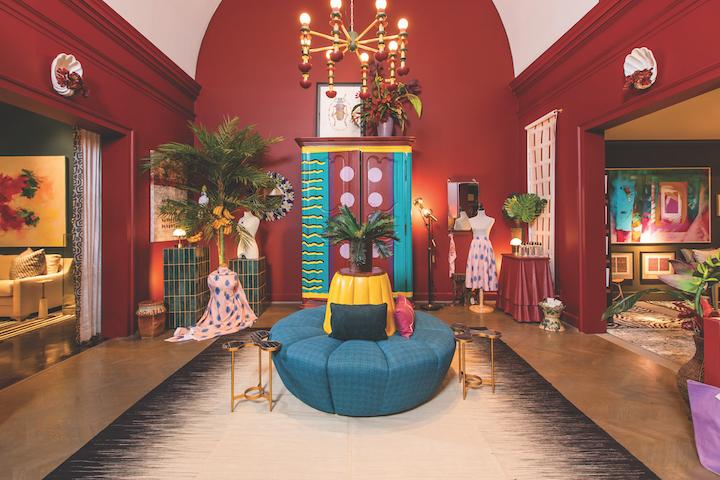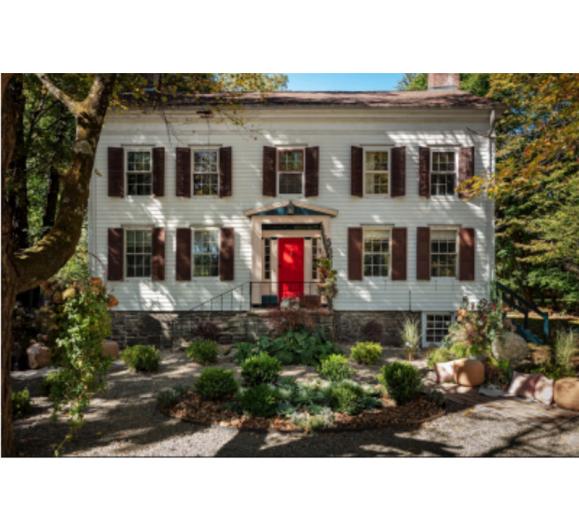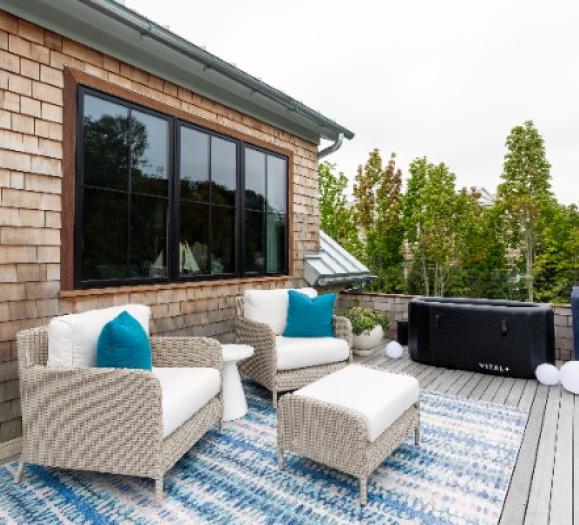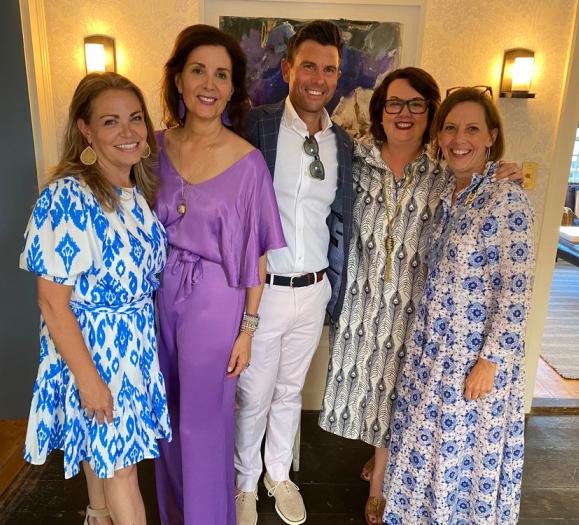For interior designers, the challenge can be what’s coming next, what niche needs filling, where do we find growth opportunities, and how do we work together in our industries to raise everyone up? From focusing on a sense of home as a sanctuary to finding business opportunities that help other interior designers grow their businesses, these five designers are introducing personal angles to their craft as a way to stay authentic to what they love while differentiating their business models.
True Craft and Authenticity
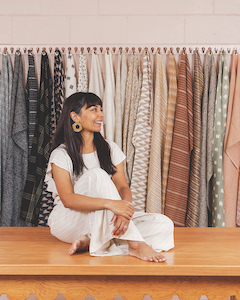
Born in Bombay, Mili Suleman grew up in Oman where her young parents were seeking better opportunities. “I came to the U.S. 20 years ago for the same reasons,” she says. “I wanted to create a bright future for myself and my own destiny.”
Graduating from Texas Christian University with a degree in sociology, she eventually returned to school for graphic design and worked for some years both within an agency structure and heading her own freelance business. “It came naturally to me, and I was really good at it, but I felt like I wasn’t using all the parts of my brain,” she remembers. “I wanted something more complex, more of a challenge.”
That’s when she came upon John Robshaw’s book, “Prints: Textiles, Block Printing, Global Inspirations and Interiors.” “I thought, ‘This is amazing, and it’s all happening in India!’” Trips ensued to explore villages deep in the interior where she witnessed the craft of making cloth firsthand. “I fell in love with the sound of the hand-looms,” Suleman says.
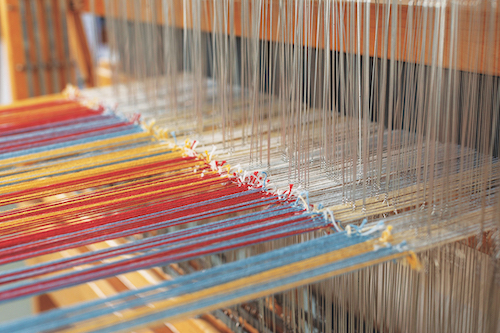
Today, Suleman is a powerful influencer in the design community and her Dallas-based company KUFRI, has become a one-stop shop for other established designers to create their own unique, handwoven designs. Her showroom, focused on refined modernity on the edge of the design district, includes two looms and an in-house textile designer, and allows designers to see their woven prototypes come to life before their eyes in as little as two or three weeks, as opposed to the two or three months it takes to receive prototypes from India. Following approval, the designs are then sent to the company’s weavers in India to produce.
Suleman’s cutting-edge work is appealing to the growing desire for true craft and authenticity, and her newest line of block prints on hand-woven fabrics is due in February. “What you use in your life on a day-to-day basis is a reflection of what your life is, and right now, we’re busy,” she says. “We’re commuting and we have social media wasting all of our time, and we’re just pulled in so many directions. There is a need to simplify our lives with more thoughtful, meaningful products. At the same time, while I still want a clean, simple house, I want to add a few treasures to personalize the minimalism with another layer of artful pieces. My new block-print collection is a reaction to that. I feel the design industry as a whole is starting to rethink things, and that’s one reason that the large showrooms are starting to feel obsolete and antiquated. We are yearning for smaller, more personal and more meaningful connections.”
Guided By a Northern Star
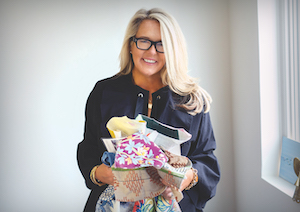
Veteran High Point Market Style Spotter, Cynthia Ferguson, the creative engine behind Toronto-based Cynthia Ferguson Designs, may have hit upon the solution for firms who don’t necessarily want to scale up. She’s started a new channel in her full-service design business handling the back-office work for designers in the United States.
“We started white labeling about three years ago, and I love doing it,” Ferguson says. “I discovered that a lot of U.S. designers live outside an urban center and have clients with much larger properties because they are outside a major city. They might get two or three large projects and suddenly find they can’t handle the work because they don’t have the ability to grab staff. They are looking for support, so we white label drawings for them, we’ll do their AutoCAD, their storyboards, and we’ll do spec-ing for them if they need that. It’s been really well-received, and we have a ball doing it because we get to participate in projects that are so different from what we do here in Toronto with no real client interaction.”
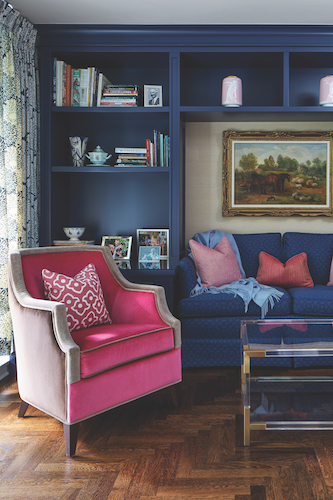
With white label projects as far flung as Colorado, Atlanta and the Hamptons, Ferguson says the business model gives designers the ability to take on more work and still make a margin “because our services are in Canadian dollars, and they can bill us out at an intermediate or senior designer rate. They’re still making money because they haven’t had to find a skilled person or worry about taking somebody on and then not having enough work. It allows them to turn out more work, and for us it’s like having a mental break.”
Also, on the boards for Ferguson and her team this coming year is the launch of invite-only client events in a small retail space she’s just acquired. The pop-up shop will be a curated collection “of things that I have purchased that I know people will like and respond to,” she says. “It’s a great way for me to test the market, but without having to staff a store or pay for street-front property.”
She’s also chasing her first boutique hotel experience and is actively seeking partnerships and collaborations with other companies, not for product design, but as a spokesperson who can help them communicate the value of their products to the trade. “That’s something I am working on in 2020 for sure, bridging those gaps and trying to help vendors and artisans reach bigger and better markets. In High Point this past fall, it was really evident that some of the companies are starting to think that way, because there were more designer vignettes and designer involvement in the showrooms than ever before. I was part of the first team hired for the inaugural Showhouse in a Showroom at Alden Parkes, and that really changed everything. It was a huge undertaking, but such smart marketing.”
With one foot firmly rooted in the design industry, and the other in business entrepreneurship (she has a degree in international relations from McGill University), Ferguson says that when she looks at opportunities for 2020, she is looking through the combination of those lenses. “For that reason, I think I look at this very differently than other designers do.”
Finding Sanctuary

Lisa Kahn is calling from an airport, on the next leg of a journey following a week-long retreat at the Esalen Institute in Big Sur, where she was focused on the “interplay between consciousness and our spaces, the exact intersection between the human spirit and the built environment.
“Interior design is evolving,” says the award-winning designer headquartered in Naples, FL, who has carved her stylistic niche in the residential decorating world as a purveyor of calm. Her popular blog, findingsanctuary.com, is just one of the business endeavors that has grown out of her experiences as a working interior designer and the mother of a special needs child. “As an interior designer, when you are facing tough times and you really don’t know what to do in your own dark night of the soul, you turn to your space,” she says. “And it really was through those hard personal days that I came to really understand that our spaces have an unbelievably profound effect on our mental health, our physical health, our emotional health and our spiritual health, and I discovered that there is a wonderful opportunity there for designers to tap into that, and really use their power for the good of all.”
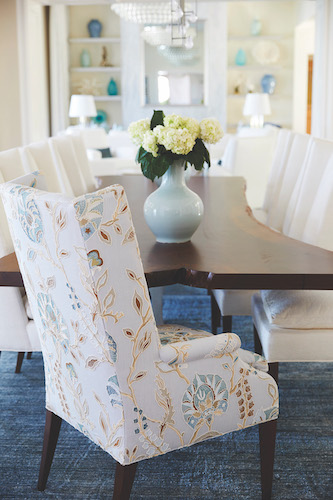
Kahn has been developing an e-commerce site where she will sell both curated products and those she has designed and produced. She has a speaking series and is also currently at work on a book and expects to launch Sanctuary Consulting before long. “My firm is going to turn 20 in 2020, and I’m very excited about that thanks to my growing understanding that Sanctuary is so much more at this point than just a design style or a design philosophy,” she says. “It really is a life philosophy and I find myself applying it to all these other areas of my life, from the way that I treat money to the way I treat my body, my friends and my relationships. It’s really interesting to see how this deep, ever-unfolding understanding that I have is really affecting so many different parts of my life in such a positive, marvelous and wonderful way.”
What can others take from this? “We really have an awesome responsibility and opportunity,” Kahn says. “We have always known that we can really affect people’s quality of life, but I don’t know that we’ve really capitalized on that, that we understand how profound that can be, how we can really help people transform their lives through their spaces. That is an enormous statement, but I mean it.”
Changing Pages
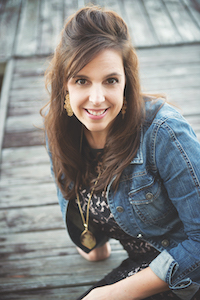
Lisa Haude became intrigued by hospitality design in college and has never looked back. The President of Houston-based Paradigm Design Group focuses on telling unique stories through thoughtful design, incorporating her clients’ histories, locations and cultures through color selection, local artifacts and more to help immerse hotel guests in new cultures and lifestyles.
The biggest change she’s seen in the two decades since she launched her design firm are the timeframes in which to get the jobs done. “As massive as some of our projects are, the timelines are getting shorter and shorter,” Haude relates. “The hotel business has become much more competitive and consumers have so many more options when it comes to where they will stay. Hotels are losing money if they are not selling at full capacity because a portion of their property is out of commission because it’s going through renovation. As a result, when an owner finally says, ‘OK, we’re going to do these improvements,’ the message funnels down to the design and construction team: How quick can you get it done because we have a very small window.”

While Haude admits hospitality design has always been a pressure cooker environment, another challenge these days is an increase in competition for the available jobs. “I’m always competing against the same group of firms. That’s our norm, but as more brands are moving into different types of properties, they are starting to go outside the swim lane a bit. They are saying, ‘Maybe we should try a residential designer in this instance, because we’re looking for a certain experience.”
In the coming year, Haude is working to solidify and highlight her niche. “I think what it boils down to for me is evaluating what we do really well and then pushing in that direction as an expert in that element,” she says. “Hospitality is morphing a bit with more properties becoming lifestyle-driven. You could focus just on restaurants or boutique resorts or 55-plus communities, but I think the key is to become an expert in some of these elements because properties are really going to start honing in on those niches moving forward.”
Moore Couture

For interior designer Holly Hickey Moore, the new year will be all about fashion, and not just in the playfully sophisticated interiors her eponymous firm is known for. “I really want to scale down and become more of a boutique firm, because I feel quality is compromised when you have so many things up in the air as far as projects go,” she says. “And I’m starting a couture fashion collection to translate what I do to the body. In designing textiles everybody says, ‘You should do a wallpaper or fabric line,’ but that’s what every other designer does. I want to do something different. I really love fashion and I want to incorporate that into my brand.”
In terms of scaling back her thriving interior design concern, Moore is looking forward to opening her own boutique studio/shop. “Moving forward I’m going to be more selective about the projects I’m taking on. I would love to land a hospitality project, but it’s not going to happen if I keep saying yes to all the things that don’t really make me happy.”
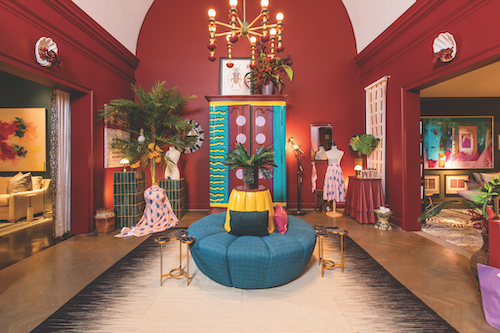
In fact, Moore, who has been a working designer since graduating from Texas State University and has worked for both real estate developers and a high-end residential design group in San Antonio, had to wind down her own successful design firm in Vermont before moving to Texas. “I think we all have to stop and rethink and reinvent and simplify at some point,” she says. In the pursuit of success, “I think people just get out of control, and 10 years down the road they are miserable. They have all the press, the great projects, but the whole road was miserable. I’ve been there and I don’t want to do it again.”



